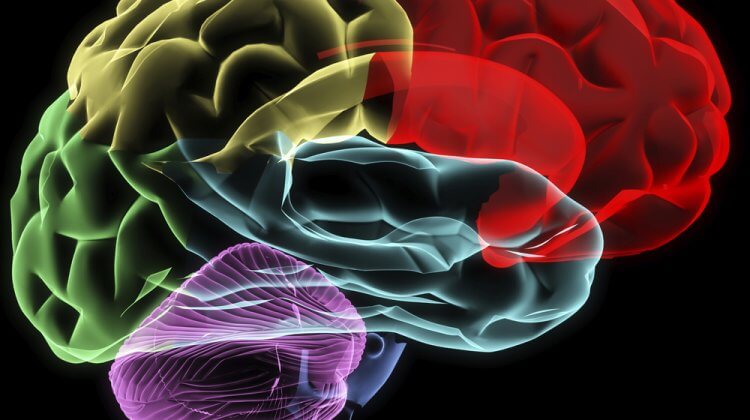
1. History of Anabolic-Androgenic Steroid Use in Competitive Sports and Medicine
The primary use of anabolic-androgenic steroids is in replacement therapy for male hypogonadism; other medical uses of anabolic-androgenic steroids include growth promotion in various forms of stunted growth, osteoporosis, mammary carcinoma, anaemias and hereditary angioneurotic oedema. Observation and clinical trials indicate that adjuvant therapy with anabolic-androgenic steroids can be supportive in the treatment of conditions characterised by a negative nitrogen balance: major surgery, cachexia of various origins, burns, traumata, convalescence from illness, injuries and immobilisations, as well as during radiotherapy and therapy with cytotoxic drugs (Kochakian 1976; Kopera 1976, 1985; Kruskemper 1968). Unfortunately, research concerning additional legitimate applications of anabolic-androgenic steroids has most likely been impeded by the existing emotional polarisation of anabolic-androgenic steroid supporters and opponents. As Kochakian (1990) has pointed out, the frequent and often hysterical references in the popular press to unsubstantiated adverse effects of anabolic-androgenic steroids has often resulted in the loss of both media and medical/scientific credibility, deterring research on beneficial and legitimate medical uses, and as a stimulus and encouragement for litigation against physicians.
The use of various physical and chemical aids in performance enhancement is not a novel problem but has been a feature of athletic competition since the beginning of recorded history (Csaky 1972; Strauss & Curry 1987). Ancient Greeks ate sesame seeds, bufotenin was used by the legendary berserkers in Norwegian mythology, and the Andean Indians and the Australian aborigines chewed, respectively, coca leaves and the pituri plant for stimulating and antifatiguing effects (Csaky 1972; Williams 1974). Anabolic steroids have been used by athletes to enhance appearance and performance for many years. The first ergogenic use of anabolic-androgenic steroids was reported to have occurred in the 1950s among weightlifters and bodybuilders (Wright 1978). Since that time their use has permeated a myriad of sports (Anderson & McKeag 1985, 1989; Buckley et al. 1988; Gilbert 1969; Starr 1981; Todd 1987; Wade 1972; Yesalis et al. 1990a). Payne (1979) suggested that the use of anabolic-androgenic steroids was a significant problem at the 1964 Olympic Games. Ljungqvist (1975) reported that one-third of a sample of elite track and field athletes in Sweden; surveyed admitted to systematic anabolic-androgenic steroid use by 1972. Silvester (1973) reported that 68% of a sample interviewed at the 1972 Olympic Games from 7 countries, and who were competing in such diverse activities as throwing, jumping, vaulting, sprinting, and running up to 5000m, admitted having used anabolic-androgenic steroids. Although it was suggested as early as 1973 (Frazier 1973) and reiterated later (Wright 1978, 1980, 1982), it is now evident that the use of anabolic-androgenic steroids is not limited to elite amateur and professional athletes. It has trickled down from the professional and college levels to the high schools and junior high schools (Buckley et al. 1988; Yesalis et al. 1989a, 1990a). The estimated prevalence of nonmedical anabolic-androgenic steroid use and the implications for society and public health have also prompted several scientific meetings, including a technical review at the National Institute on Drug Abuse in 1989, and both federal and state investigations and efforts to reclassify anabolic-androgenic steroids as controlled substances (Government Accounting Office 1989; Halligan et al. 1989; Taylor 1987a,b; Yesalis 1989; Yesalis et al. 1990a) despite nonconcurrence from the American Medical Association (AMA 1989).
Patterns of anabolic-androgenic steroid use among athletes have been determined from several surveys. Burkett and Falduto (1984) interviewed 24 weight-training athletes at a gymnasium in a metropolitan area of the southwestern United States. Subjects surveyed took a combined steroid does of 4 to 8 times the recommended medical does, used more than one anabolic-androgenic steroid at a time (‘stacking’), combined use of injectable and oral anabolic-androgenic steroids, and used the drugs frequently, usually in cycles (an episode of use from 6 to 12 weeks or more). Although Burkett and Falduto questioned a very specific sample of anabolic-androgenic steroid users, they concluded that their subjects seemed to be representative of the type of athletes who used anabolic-androgenic steroids. Cohen et al. (1988), in a study of hypercholesterolaemia in 21 male powerlifters using various anabolic-androgenic steroids, reported significantly higher levels of anabolic-androgenic steroid use in their subjects than Burkett and Falduto (1984), with daily dosages ranging from 60 to 400mg. Pope and Katz (1988) have also reported daily dosages between 10 and 200mg (of various anabolic-androgenic steroids) for anabolic-androgenic steroid users in their investigation of affective and psychotic symptoms associated with anabolic-androgenic steroid use.
Frankle et al. (1984) found that 110 of 250 weightlifters they interviewed in several gymnasia in the metropolitan Chicago area, many of whom were noncompetitive lifters, also used a variety of anabolic-androgenic steroids. 50 weightlifters were interviewed in detail; a majority (56%) had no competitive intents in weightlifting, bodybuilding or any other athletic events, a proportion that substantially exceeds that found by Buckley et al. (1988) in a nation-wide survey of male high school seniors. Frankle et al. (1984) concluded that anabolic-androgenic steroid abuse had reached alarming proportions in noncompetitive athletes.
The Buckley et al. (1988) survey suggests that one-quarter to one-half million adolescents in the United States have used or are currently using anabolic-androgenic steroids. Anderson and McKeag (1985) reporting on a nation-wide survey of alcohol and drug use among college athletes indicated that anabolic-androgenic steroids were used in all men’s sports, one women’s sport, and that the sport with the greatest admitted use (9%) was football. The overall anabolic-androgenic steroid use rate in all sports nationally was 4%. Anderson and McKeag (1989) replicated their original study 4 years later and although they found that overall use rates for anabolic-androgenic steroids had remained stable, anabolic-androgenic steroids were now being used in 2 additional women’s sports. A survey and follow-up telephone interview by Yesalis et al. (1988) following the 1987 US Powerlifting Federations’ National Championship found 33% of the initial respondents and 55% in a follow-up subsurvey of the same group, admitting previous anabolic-androgenic steroid use. Since athletes may have a propensity to underreport of disguise their actual anabolic-androgenic steroid use for various reasons, caution must be used when interpreting values concerning the prevalence of anabolic-androgenic steroid use by athletes.
Part 2: Potential Mechanisms for Some Anabolic-Androgenic Steroid Effects on the Nervous System
Originally appearing in Sports Medicine 10(5) 303-337. 1990. Copyright © 1990 by Adis International Limited. All rights reserved. Reprinted by MESO-Rx with permission. Any duplication of this document by electronic or other means is strictly prohibited.
About the author
Warning: Undefined array key "display_name" in /home/thinksteroids/public_html/wp-content/plugins/molongui-authorship-pro/includes/hooks/author/box/data.php on line 11
Warning: Undefined array key "display_name" in /home/thinksteroids/public_html/wp-content/plugins/molongui-authorship-pro/includes/hooks/author/box/data.php on line 11
Warning: Undefined variable $show_related in /home/thinksteroids/public_html/wp-content/plugins/molongui-authorship/views/author-box/parts/html-tabs.php on line 30



Leave a Reply
You must be logged in to post a comment.